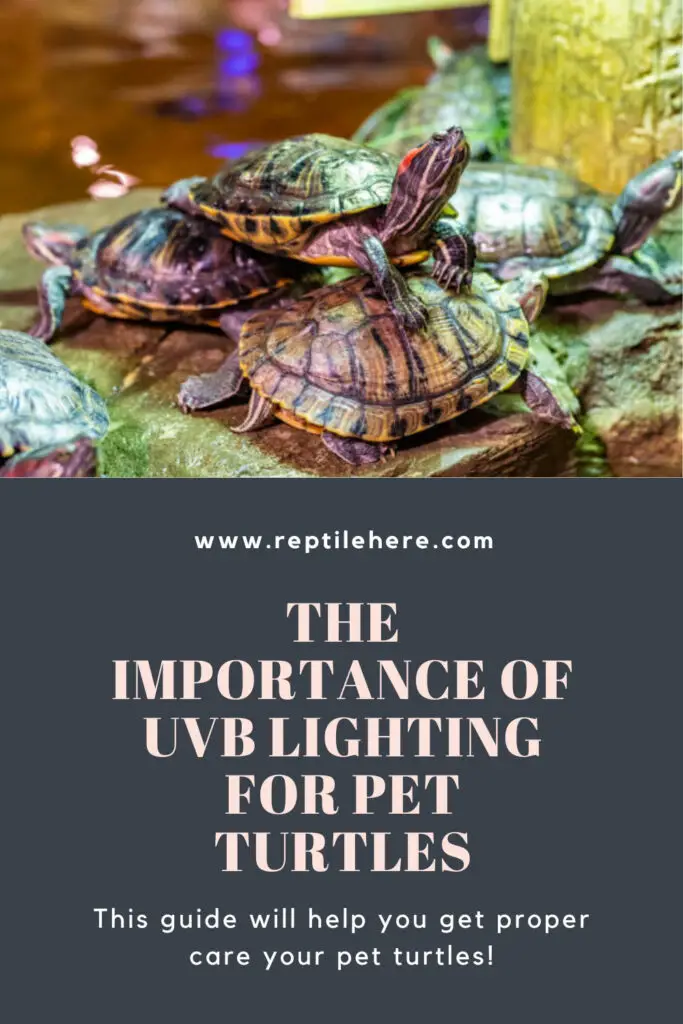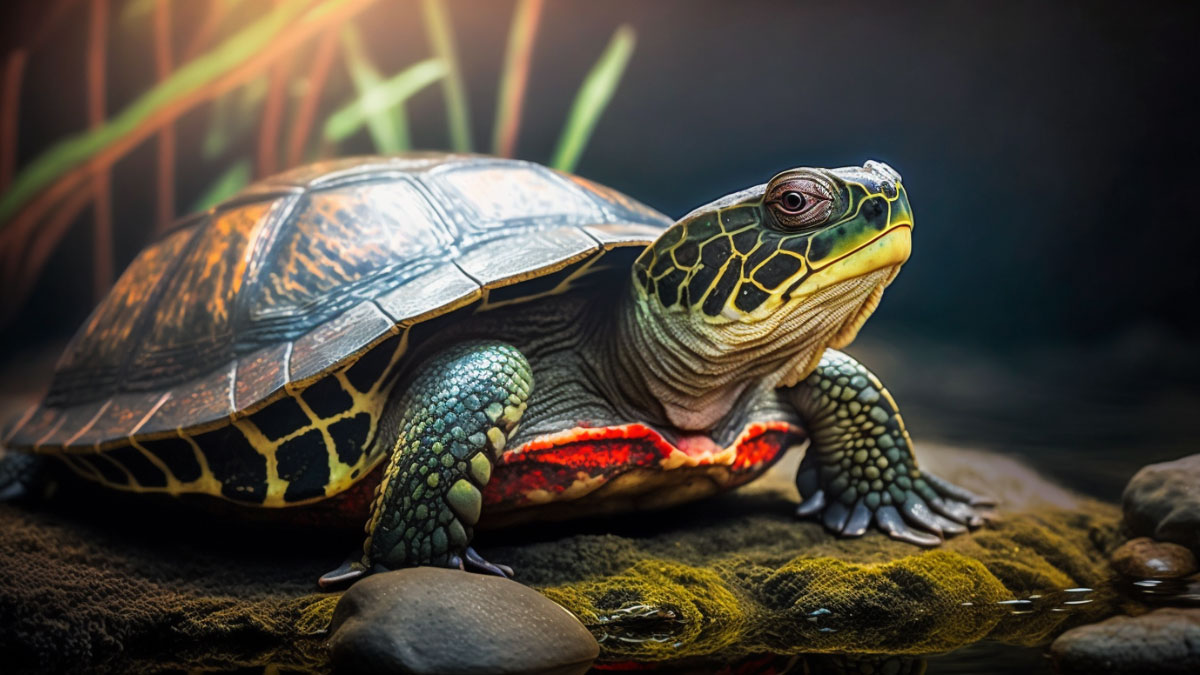The Importance of UVB Lighting for Pet Turtles
Properly setting up your turtle’s habitat is key to ensuring your little guy stays happy and healthy. And a perfect setup for your turtle should feature UVB lighting. But is the lighting necessary for your pet turtle? How does UVB light help your pet turtle?
Pet turtles require UVB lighting to help them produce vitamin D3 which then helps with proper calcium absorption. Without this light, your turtle may suffer calcium deficiency and suffer health issues such as metabolic bone disease.
In this guide, we have shared more in-depth details on why UVB lighting is important for your turtle’s environment, how to provide your turtle with optimal UV lighting, different types of UVB light to consider, and more.
Importance of UVB lighting for Pet Turtles
Contents
When setting up your turtle’s enclosure, the end goal is to come up with something that closely mimics your turtle’s natural habitat in the wild.
And omitting the lighting part will be a big drift from this goal. Turtles in the wild have the sun and turtles in captivity have the UVB lighting as their “sun.”

Turtles in the wild get their dose of vitamin D3 by basking in natural sunlight for hours (this is the best source of UV light!).
But in captivity, where you put your turtle in an indoor enclosure, it won’t have access to direct sunlight to help it synthase vitamin D3.
You can help compensate for the lack of direct sunlight by installing a UVB light-producing bulb in its basking area
While some folks argue that you can just place the enclosure by the window and forget about the UV bulb, this is untrue.
Windows tend to filter the UVB rays from the sun, so the light that gets to your turtle won’t help it produce the much-needed vitamin D3.
UVB lighting plays a crucial role in your turtle’s health by helping it produce vitamin D3—which is essential for proper absorption of calcium in your turtle’s diet.
Lack of exposure to UV rays leads to vitamin D3 deficiency in your turtle.
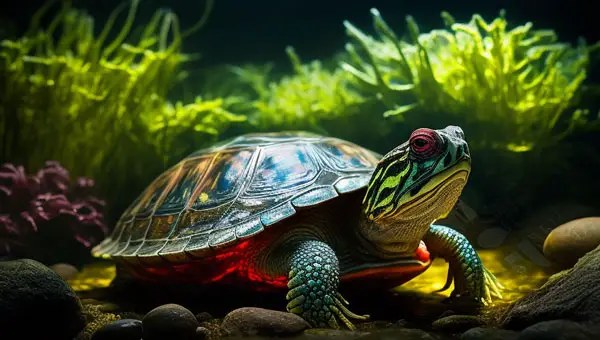
As a result, it’s unable to properly metabolize calcium which is essential for maintaining healthy shells and bones in turtles. Lack of this nutrient can lead to metabolic bone disease.
For starters, metabolic bone disease is a serious health issue in turtles that’s not only painful but also causes significant damage, with symptoms like splayed legs, deformed beak/jaws, swollen legs, weak limbs, difficulty walking, and lethargy.
If not detected early enough, it can cause severe damage to your turtle by causing weakened muscles, bone fracturing as they become brittle due to lack of calcium, and even death!
Different turtle UVB lighting options available
There are essentially two types of UVB light for turtles you can find on the market today—tubular and compact lights.
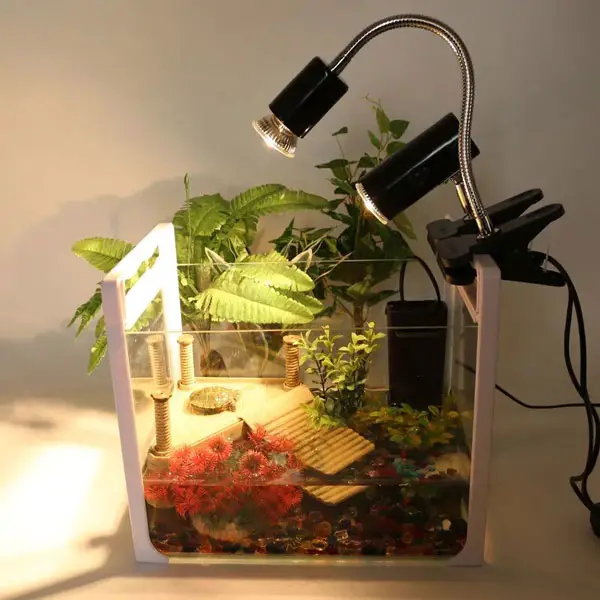
Let’s briefly discuss each of them below:
- Tubular/linear UVB light: These bulbs take the form of fluorescent bulbs usually found in old buildings. Though they might take more space, they’re pretty easy to install and tend to shine UV light over a relatively larger area.
- Compact UVB light: These bulbs feature a twisted design and look like the small bulbs you use in your house. You’ll need to twist this type of bulb to a socket to start using it. However, if you get a too-powerful compact bulb, it can cause eye irritation in your turtle.
Tips for choosing the right UVB bulb for turtles:
When you go shopping for a UVB light bulb, you should be careful which one you get. This is because not every bulb is sure to emit UVB rays.
You’ll find most turtle owners complaining that they bought bulbs labeled “sun-spectrum” or “full-spectrum” but they couldn’t emit the UVB rays.
So, how do you ensure you get the correct UV bulb? Look for any bulb labeled 2.5, 3, or 5% UVB. Such bulbs usually come labeled “tropical” UV bulbs.
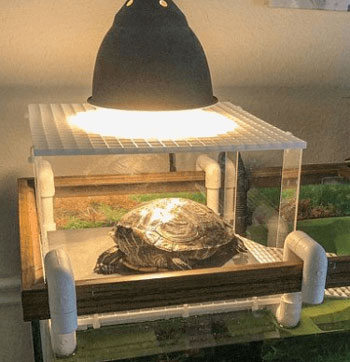
While still at it, don’t confuse UVA and UVB bulbs. While most of the bulbs sold for reptiles are both UVA and UVB, the UBA wavelength is the most crucial for the manufacture of vitamin D3 in turtles. The UVA wavelength can be helpful in terms of behavior but doesn’t help in vitamin D3 synthesis. (Source).
It is also worth noting that there are UVB bulbs that also work as heat lamps. This means they provide your turtle with both UV rays and heat, both of which are essential for your turtle health.
This bulb is essentially a mercury vapor lamp and would be ideal if you want to use one bulb instead of buying separate bulbs for heat and lighting.
However, keep in mind that these dual lights tend to consume more electrical energy compared to fluorescent UVB lamps.
This can mean getting high electric bills, especially for turtle owners who reside in areas where the electricity cost is quite high.
How to provide the optimal lighting for your pet turtle’s tank?
For your UV light to work properly, it must reach your turtle’s skin in unfiltered form. This means that no plastic or glass material should come between the light and your turtle. These can absorb all the UV rays, meaning the light that reaches your turtle will not be beneficial.
As for the placement, we recommend positioning the light at approx. 12 inches from your pet’s basking spot (this works for a 2.5% bulb). If you’ve got a 5% UV bulb, then consider placing it at least 18 inches from the basking spot. This placement will allow for maximum exposure to UV light so that your pet can reap maximum benefits.
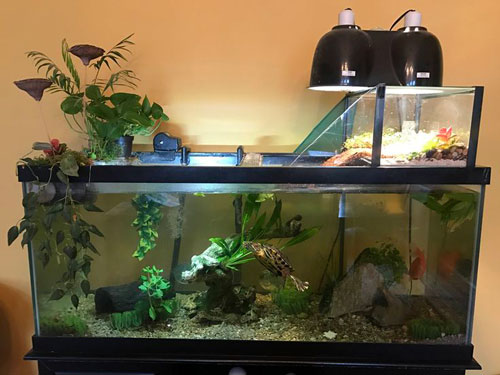
If you’ve got a UV lamp that tends to get too hot (incandescent, mercury vapor, and halogen lamps tend to become too hot), you may consider placing a screen under it. This is a precautionary measure as the bulb can easily explode when it overheats and the glass pieces can get splashed in the water, risking injuring your turtle.
You should also keep in mind that the UV bulb’s efficiency at emitting UV decreases with age. As such, it’s important to replace them after around every 6-8 months, or as per the manufacturer’s instructions.
NOTE: In addition to your indoor lighting setup, regular exposure to natural sunlight is advisable. If possible, you can take your pet outdoors where it can soak in the UV light directly from the sun. But only do this under close supervision and don’t leave your pet unattended.
Final Verdict
Providing your pet turtle with UVB lighting is essential for its health and you shouldn’t skip it when setting up your turtle’s enclosure. The lighting helps your turtle manufacture vitamin D3 which is essential for proper calcium metabolism. Lack of this lighting can lead to vitamin D3 and calcium deficiency in your turtle. This exposes your pet to metabolic bone disease.
Follow our tips in the above guide on how to get the right UV bulb for your pet turtle and how to set it correctly for maximum exposure of your turtle to UV rays. A properly set up UV lighting translates to a comfortable and healthy environment that mimics your turtle’s natural environment, keeping your shelled buddy happy and healthy.
